-
 Bitcoin
Bitcoin $114000
0.38% -
 Ethereum
Ethereum $3494
-0.29% -
 XRP
XRP $2.876
-1.80% -
 Tether USDt
Tether USDt $0.9999
0.02% -
 BNB
BNB $749.1
-0.45% -
 Solana
Solana $161.8
-1.23% -
 USDC
USDC $0.9998
0.00% -
 TRON
TRON $0.3249
-0.42% -
 Dogecoin
Dogecoin $0.1987
-0.05% -
 Cardano
Cardano $0.7247
1.90% -
 Hyperliquid
Hyperliquid $38.39
0.52% -
 Stellar
Stellar $0.3889
2.87% -
 Sui
Sui $3.459
1.66% -
 Chainlink
Chainlink $16.18
1.43% -
 Bitcoin Cash
Bitcoin Cash $540.8
1.19% -
 Hedera
Hedera $0.2449
3.79% -
 Ethena USDe
Ethena USDe $1.001
0.03% -
 Avalanche
Avalanche $21.41
-0.12% -
 Toncoin
Toncoin $3.699
4.73% -
 Litecoin
Litecoin $110.0
3.08% -
 UNUS SED LEO
UNUS SED LEO $8.964
0.05% -
 Shiba Inu
Shiba Inu $0.00001221
1.28% -
 Polkadot
Polkadot $3.608
1.91% -
 Uniswap
Uniswap $9.150
1.59% -
 Monero
Monero $297.7
0.78% -
 Dai
Dai $1.000
0.02% -
 Bitget Token
Bitget Token $4.319
0.78% -
 Pepe
Pepe $0.00001051
1.89% -
 Cronos
Cronos $0.1323
0.20% -
 Aave
Aave $257.8
1.36%
How to choose a suitable Ethereum ETF? What are the key indicators?
Ethereum ETFs offer regulated, accessible exposure to ETH price movements without direct crypto ownership, with key considerations including expense ratios, tracking accuracy, liquidity, and regulatory oversight.
Jun 18, 2025 at 11:29 am

Understanding Ethereum ETFs
An Ethereum ETF (Exchange-Traded Fund) is a financial product that tracks the price of Ethereum without requiring investors to directly hold the cryptocurrency. These funds are traded on traditional stock exchanges and offer exposure to Ethereum's price movements in a regulated environment. For many investors, especially those unfamiliar with digital wallets or blockchain technology, Ethereum ETFs provide a more accessible entry point into the crypto market.
Key advantages include liquidity, regulatory oversight, and ease of trading through familiar brokerage platforms. However, not all Ethereum ETFs are created equal, and choosing the right one involves understanding several key indicators and performance metrics.
Expense Ratio and Management Fees
One of the most important factors when selecting an Ethereum ETF is its expense ratio—the annual fee charged by the fund for managing assets. This percentage directly impacts your returns over time. A lower expense ratio generally means more of your investment gains stay with you.
- Look for funds with expense ratios below 0.5%, as higher fees can erode long-term profitability.
- Compare multiple ETFs side by side using financial data platforms like Bloomberg or Morningstar.
- Be aware of any hidden costs such as tracking error adjustments or rebalancing fees.
Some newer ETFs may offer promotional rates or reduced fees during their launch phase, which can be beneficial if you're entering early.
Tracking Accuracy and Net Asset Value (NAV)
The primary function of an Ethereum ETF is to mirror the price of Ethereum as closely as possible. The tracking accuracy refers to how well the ETF follows the actual ETH price movement.
- Check the ETF’s historical NAV (Net Asset Value) against Ethereum’s spot price to assess consistency.
- A large deviation between the ETF price and the underlying asset could indicate poor management or structural inefficiencies.
- Review quarterly reports to see how frequently the fund rebalances and whether it uses physical holdings or futures contracts.
ETFs that use physical Ethereum backing tend to have better tracking accuracy compared to those relying on derivatives.
Liquidity and Trading Volume
Liquidity is crucial for any ETF because it determines how easily you can buy or sell shares without significantly affecting the price. High trading volume usually indicates strong investor interest and better execution prices.
- A daily average trading volume above $1 million is considered healthy for most Ethereum ETFs.
- Low-volume ETFs may suffer from wider bid-ask spreads, making them less attractive for active traders.
- Use tools like Yahoo Finance or Google Finance to monitor real-time volume and liquidity metrics.
Investors should also check the ETF’s average spread between the bid and ask prices to understand transaction costs.
Regulatory Approval and Custodial Security
Since Ethereum ETFs operate within traditional financial markets, they must receive approval from regulatory bodies such as the SEC (U.S. Securities and Exchange Commission). Regulatory endorsement adds a layer of legitimacy and investor protection.
- Verify whether the ETF has received full SEC approval or is operating under a temporary exemption.
- Research the custodian responsible for holding the underlying Ethereum reserves.
- Top-tier custodians often partner with established financial institutions and undergo regular audits.
Security measures such as cold storage and insurance coverage are also essential to ensure the safety of the fund’s digital assets.
Diversification and Underlying Exposure
While most Ethereum ETFs focus solely on ETH, some may include exposure to other assets such as staking rewards, DeFi tokens, or even Bitcoin. Understanding the composition of the fund helps align it with your investment goals.
- Read the ETF’s prospectus to confirm whether it offers pure-play Ethereum exposure or includes other elements.
- If the fund includes staking income, evaluate how those earnings are distributed to shareholders.
- Consider whether the fund invests in Ethereum futures or directly holds ETH on-chain.
Each structure comes with different risk profiles and tax implications, so clarity on exposure is vital.
Frequently Asked Questions
Q: Can I stake Ethereum through an Ethereum ETF?
Some Ethereum ETFs incorporate staking mechanisms where the fund stakes its Ethereum holdings and distributes the yield to investors. However, not all ETFs do this, so it’s important to check the fund’s documentation for details on staking activities and distribution policies.
Q: Are Ethereum ETFs available globally?
Ethereum ETFs are primarily listed on U.S. exchanges, but similar products exist in Canada, Europe, and Asia. Investors outside the U.S. should verify local regulations and availability through authorized brokers or exchanges.
Q: How do Ethereum ETFs differ from Ethereum futures ETFs?
Physical Ethereum ETFs hold actual ETH as collateral, while futures-based ETFs track Ethereum prices through derivative contracts. Physical ETFs typically offer more direct exposure, whereas futures ETFs may experience roll costs and tracking discrepancies over time.
Q: Do Ethereum ETFs pay dividends?
Ethereum ETFs themselves do not pay dividends in the traditional sense. However, if the fund generates income through staking or lending, these earnings may be distributed to shareholders periodically, depending on the fund’s structure and policy.
Disclaimer:info@kdj.com
The information provided is not trading advice. kdj.com does not assume any responsibility for any investments made based on the information provided in this article. Cryptocurrencies are highly volatile and it is highly recommended that you invest with caution after thorough research!
If you believe that the content used on this website infringes your copyright, please contact us immediately (info@kdj.com) and we will delete it promptly.
- Altcoins Most Searched: Hedera (HBAR) and the ETF Hype
- 2025-08-03 20:50:16
- Arbitrage Adventures: Creditcoin, Kaspa, and Chasing Crypto Profits
- 2025-08-03 20:30:16
- Claude HIVE & Code Agents: Faster Coding Revolution?
- 2025-08-03 20:50:16
- Trump Media, Bitcoin, and Crypto: A Surprising Alliance in the Making?
- 2025-08-03 21:30:16
- Shiba Inu's Bullish Reversal Hopes Amid Market Uncertainty: A Deep Dive
- 2025-08-03 21:30:16
- Shiba Inu's Struggle, Mutuum Finance's Rise, and Key Support Levels: A Crypto Deep Dive
- 2025-08-03 20:55:16
Related knowledge
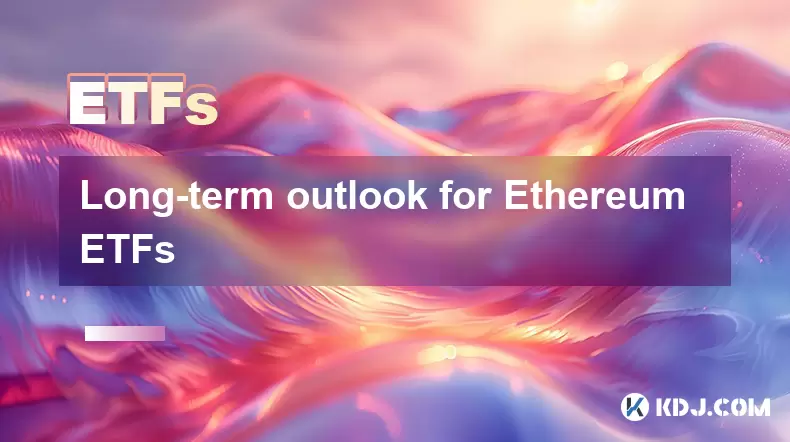
Long-term outlook for Ethereum ETFs
Jul 22,2025 at 06:42am
What Exactly Is an Ethereum ETF?An Ethereum Exchange-Traded Fund (ETF) is a financial product that tracks the price of Ethereum (ETH) and is traded on...
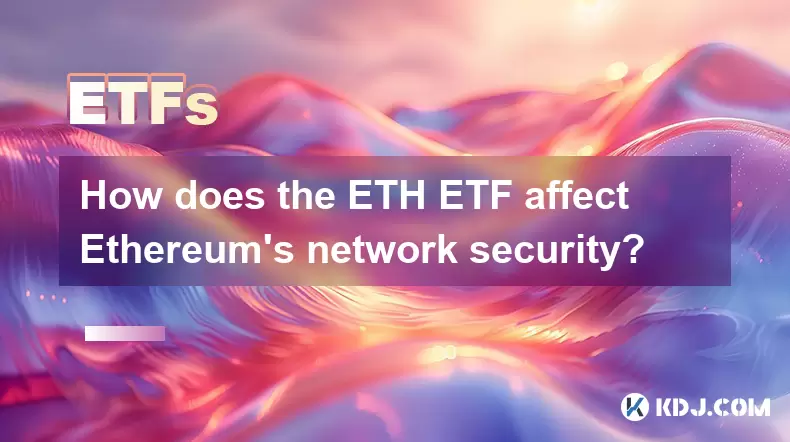
How does the ETH ETF affect Ethereum's network security?
Jul 17,2025 at 01:29pm
Understanding the ETH ETF ConceptAn Ethereum Exchange-Traded Fund (ETH ETF) is a financial product that allows investors to gain exposure to Ethereum ...
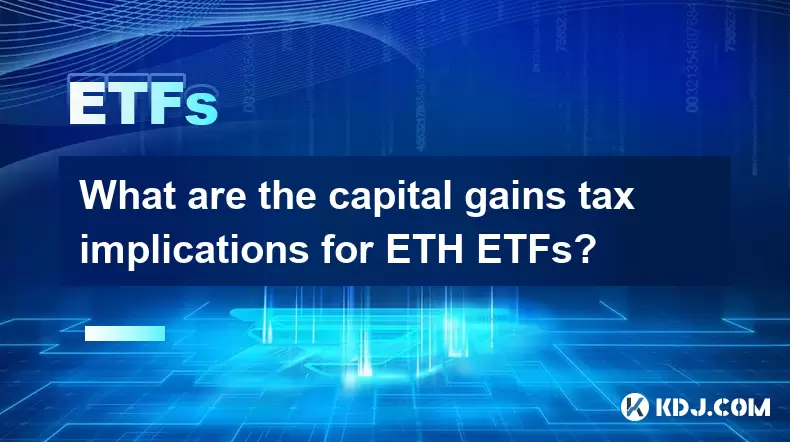
What are the capital gains tax implications for ETH ETFs?
Jul 18,2025 at 08:00am
Understanding Capital Gains Tax in Cryptocurrency InvestmentsCapital gains tax is a tax imposed on the profit realized from the sale of an asset that ...
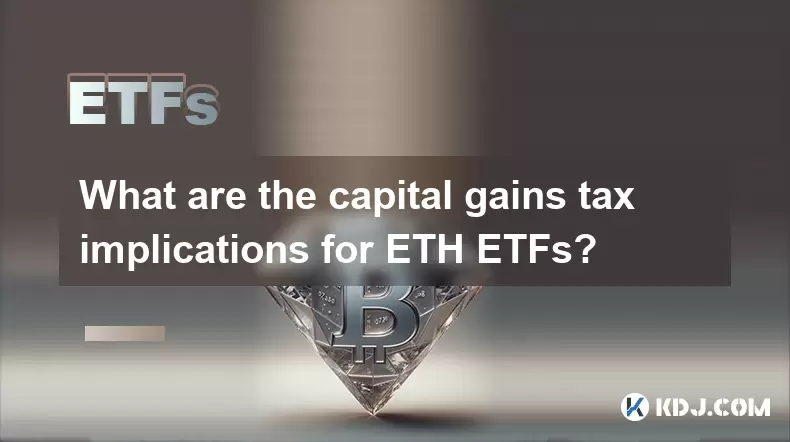
What are the capital gains tax implications for ETH ETFs?
Jul 21,2025 at 11:14am
Understanding ETH ETFs and Their TaxationAn Ethereum Exchange-Traded Fund (ETH ETF) allows investors to gain exposure to Ethereum without directly own...
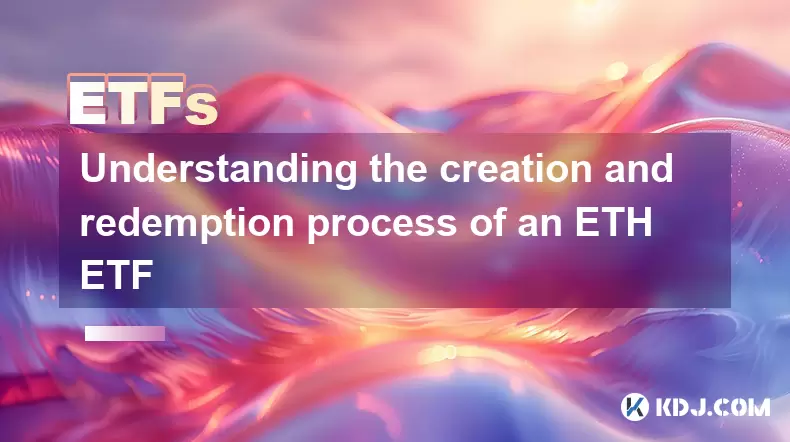
Understanding the creation and redemption process of an ETH ETF
Jul 19,2025 at 07:36am
What is an ETH ETF?An ETH ETF (Ethereum Exchange-Traded Fund) is a financial product designed to track the price of Ethereum without requiring investo...

How to analyze which ETH ETF is the best choice
Jul 19,2025 at 05:01pm
Understanding ETH ETFs and Their RelevanceEthereum Exchange-Traded Funds (ETFs) have emerged as a popular investment vehicle for those seeking exposur...

Long-term outlook for Ethereum ETFs
Jul 22,2025 at 06:42am
What Exactly Is an Ethereum ETF?An Ethereum Exchange-Traded Fund (ETF) is a financial product that tracks the price of Ethereum (ETH) and is traded on...

How does the ETH ETF affect Ethereum's network security?
Jul 17,2025 at 01:29pm
Understanding the ETH ETF ConceptAn Ethereum Exchange-Traded Fund (ETH ETF) is a financial product that allows investors to gain exposure to Ethereum ...

What are the capital gains tax implications for ETH ETFs?
Jul 18,2025 at 08:00am
Understanding Capital Gains Tax in Cryptocurrency InvestmentsCapital gains tax is a tax imposed on the profit realized from the sale of an asset that ...

What are the capital gains tax implications for ETH ETFs?
Jul 21,2025 at 11:14am
Understanding ETH ETFs and Their TaxationAn Ethereum Exchange-Traded Fund (ETH ETF) allows investors to gain exposure to Ethereum without directly own...

Understanding the creation and redemption process of an ETH ETF
Jul 19,2025 at 07:36am
What is an ETH ETF?An ETH ETF (Ethereum Exchange-Traded Fund) is a financial product designed to track the price of Ethereum without requiring investo...

How to analyze which ETH ETF is the best choice
Jul 19,2025 at 05:01pm
Understanding ETH ETFs and Their RelevanceEthereum Exchange-Traded Funds (ETFs) have emerged as a popular investment vehicle for those seeking exposur...
See all articles

























































































